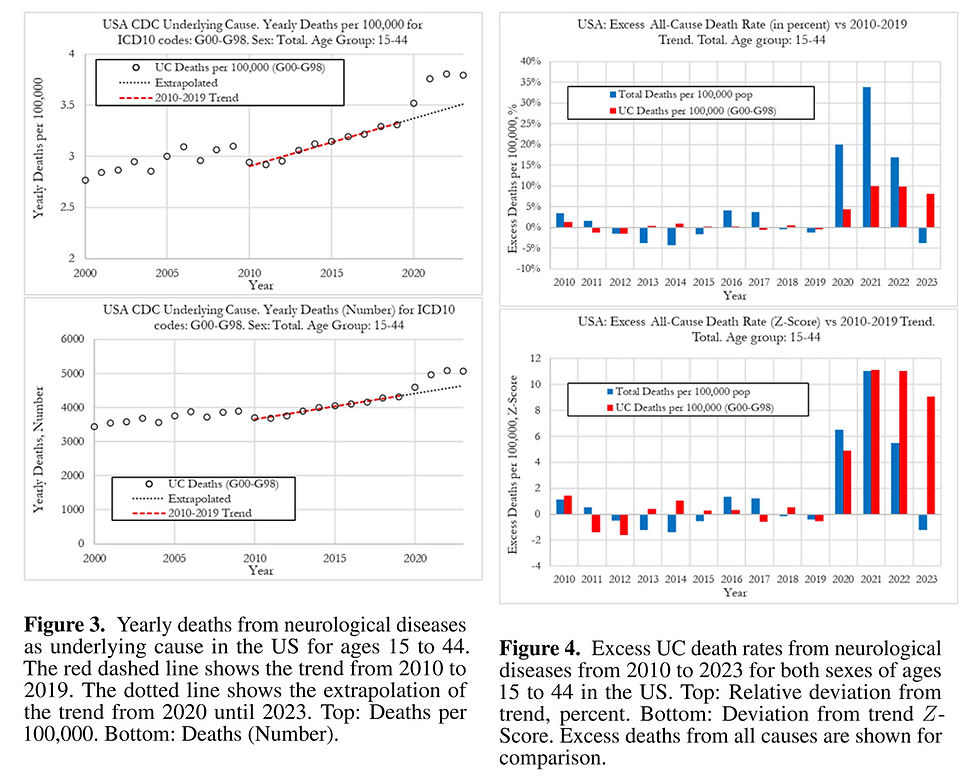Study: Excess Mortality in 125 Countries
- Simian Practicalist
- Jul 21, 2024
- 2 min read
A paper by D.G. Rancourt et al titled “Spatiotemporal variation of excess all-cause mortality in the world (125 countries) during the Covid period 2020-2023 regarding socio-economic factors and public-health and medical interventions” was published on 19 July 2024.
Previously, a paper was published that focused on 17 countries in the southern hemisphere.
This paper is 521 pages long. The main text is over three hundred pages, most of which are graphs and plots. There is a summary that is less than four pages. The remaining pages are references and appendices.
The reference period for most countries is 2015 to 2019, depending on the availability of data for the 125 countries in six continents. This covers approximately 35% of the global population. A few key observations are reproduced below.
Seventy-six (76) of the 125 countries have all-cause mortality data up to at least 30 June 2023. Of these 76 countries,
…32 countries have a high statistical certainty of having persistent and significant excess all-cause mortality in the available data for 2023, excluding excess mortality from peak residuals extending out from 2022 (by selecting an integration start date a few weeks or more later than 1 January 2023).
Somewhat consistent to the previous estimation of 17.0 ± 0.5 million COVID-19 vaccine deaths globally up to 2 September 2023, 16.9 million is estimated up to 30 December 2022.
As for the associations between COVID-19 vaccine rollouts and peaks or increases in excess all-cause mortality:
i. 30% of countries (37 of 124) have no detected excess all-cause mortality in all of 2020, only later when vaccines are rolled out…
ii. 100% of countries (110 countries with sufficient vaccination data) show varied associations between vaccine rollouts and excess mortality…
iii. 97% of countries (113 of 116) show a late-2021 early-2022 peak in excess all-cause mortality temporally associated with booster rollouts…
iv. 64% of countries (50 of 78) show a late-2022 early-2023 sharp peak in excess all-cause mortality temporally associated with booster rollouts…

Excess mortality cannot be attributed to the virus due to certain inconsistencies across countries. Amongst other reasons, two stand out.
Near-synchronicity of onset, across several continents, of surges in excess mortality occurring immediately when a pandemic is declared by the WHO (11 March 2020), and never prior to pandemic announcement in any country.
The pandemic model would require the pathogen to carry a passport and to unnaturally change its virulence in attacking vulnerable populations in different national jurisdictions.
The authors argue that the “plausible mechanisms” of excess all-cause mortality during (and after) the plandemic period:
(1) Biological (including psychological) stress from mandates such as lockdowns and associated socio-economic structural changes (2) Non-COVID-19-vaccine medical interventions such as mechanical ventilators and drugs (including denial of treatment with antibiotics) (3) COVID-19 vaccine injection rollouts, including repeated rollouts on the same populations.
Be sure to subscribe to our mailing list so you get each new Opinyun that comes out!






Comments